Hello everyone,
With the pleasant (and somewhat alarming) snowfall a couple of days ago, it feels more like the holidays than ever! The fall semester finished up last week; engineering students risked robotic life-and-limb with the annual Battle Bots Tournament while others completed homework and chilled in the tranquil 3D Lab environment. Having finished their final round of exams, our students look forward to a month of taking it easy and being with loved ones.
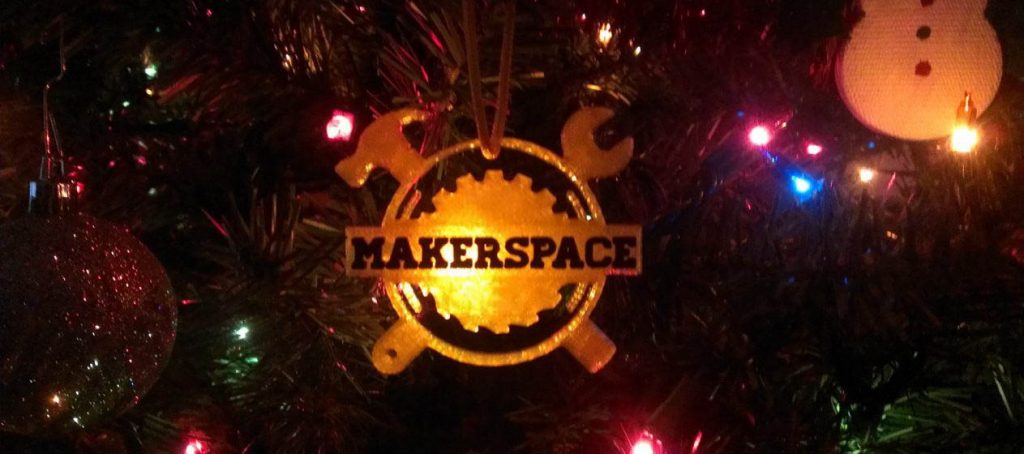
Despite coronavirus restrictions, regular community member requests kept us busy in the 3D Lab. Almost every day our lab staff received materials & design files, fabricated the requests on our 3D printers, laser engraver, and other equipment, then folks picked them up. While we miss the in-person interaction, networking, and friendship when people come together, we know this will resume after the pandemic subsides.

Even though the 3D Lab is closed over the winter break due to COVID precautions, its services are ready and available starting January 4th, 2021. If you have projects that need 3D printed, laser engraved, vinyl signage made, etc., reply to this email with your request at that time. We will perform the work in the 3D Lab at no cost for pick-up later. Here is a list of our equipment to aid in making your projects come to life.
Why buy Christmas gifts when you can make them? Handmade gifts are original and have sentimental value; they also are a “gift” to the maker simply from the joy of creating something new! Tessa, one of our community members, enlisted the help of her father to cut wine bottles in-half, creating one-of-a-kind drinking glasses. She then designed emblems with family names that were laser engraved onto the glasses, creating images with a nice, frosted look. The result was low-cost, original, and quite lovely!


Our Epilog-brand laser engraver has a wonderful company behind it, providing top-notch support years after ownership. They also have a webpage full of creative ideas of things. Epilog calls it their Sample Club where people from all over the world submit pictures and instructions for others to replicate in their own makerspaces.
One such idea is an intricate wreath, laser carved from 1/8” plywood, then sprayed with glitter paint. Our staff added a red, wooden bow with a family’s name engraved on it, resulting in a beautiful, personalized Christmas gift. Epilog included the design files for cutting the 12” wreaths, so it was a piece of cake to make these.

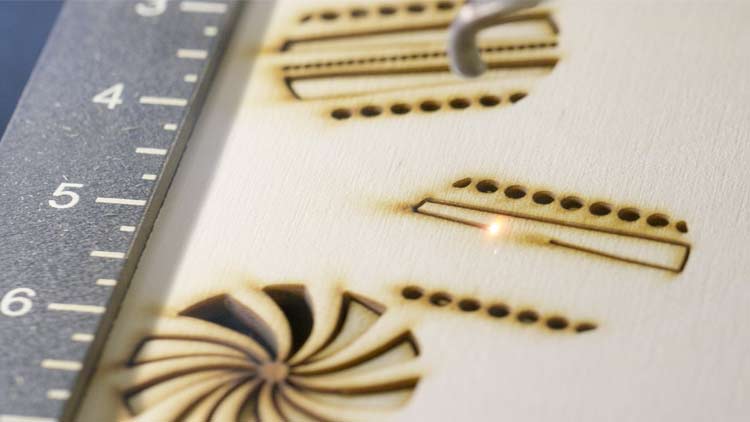
Community member Elliott continues to make strides with his Muon Telescope that the built several years ago. A muon is one of several secondary cosmic ray particles. The primary cosmic rays composed of mostly protons and alpha particles (electrons) originate in deep space or possibly from our sun. They enter the Earth’s upper atmosphere and interact with or hit the nuclei of molecules such as oxygen and nitrogen, forming several new secondary particles including muons.
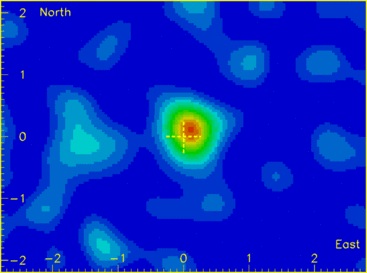
Muons are of particular interest because they are heavier than the other secondary particles, travel at 0.998 times the speed of light, and can penetrate several hundred feet into the earth. Recently, because of the ability of muons to penetrate massive rock formations, muon telescopes have been used map the inside of the pyramids in Egypt. This process revealed additional chambers that were not previously known to exist.
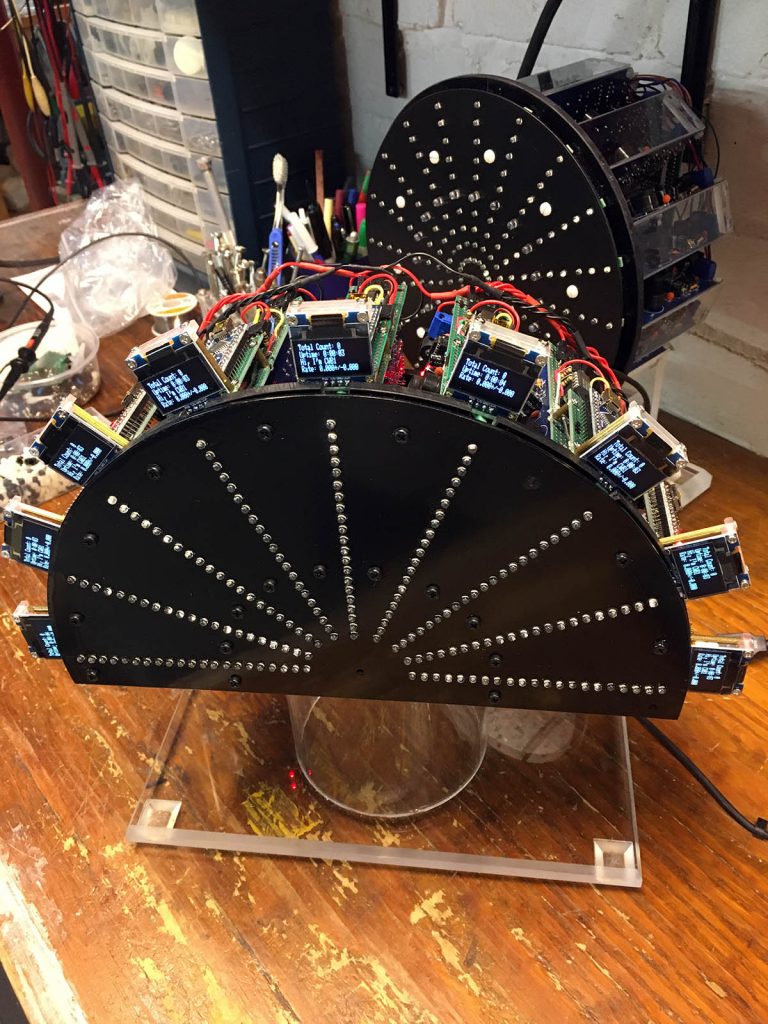
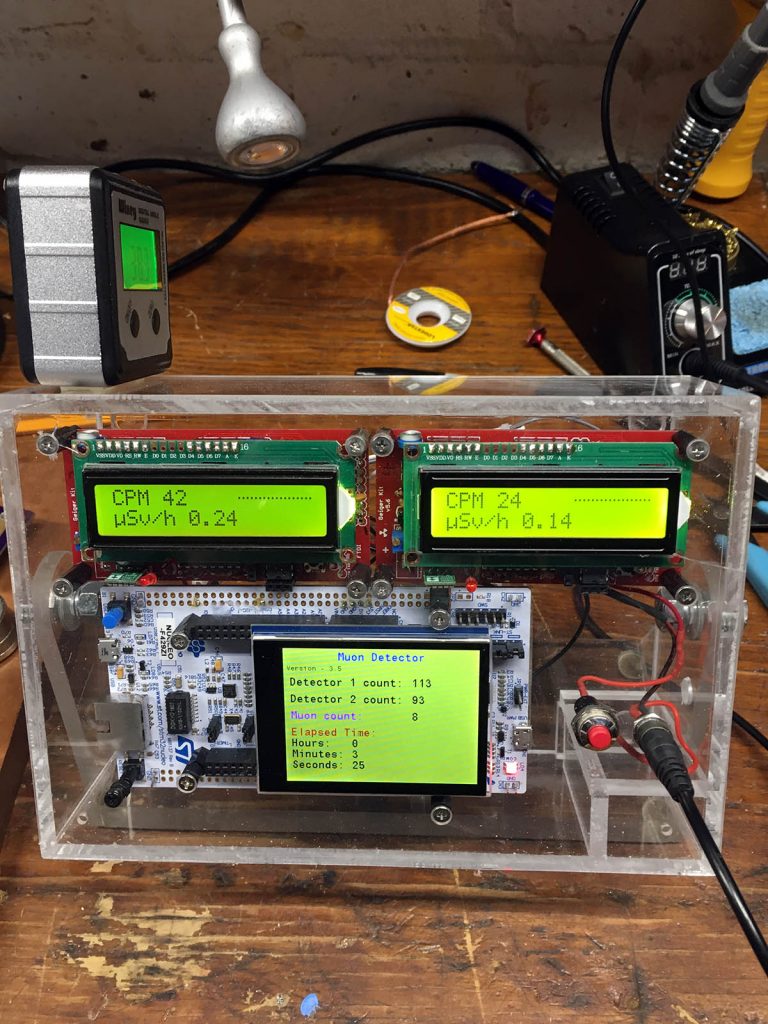
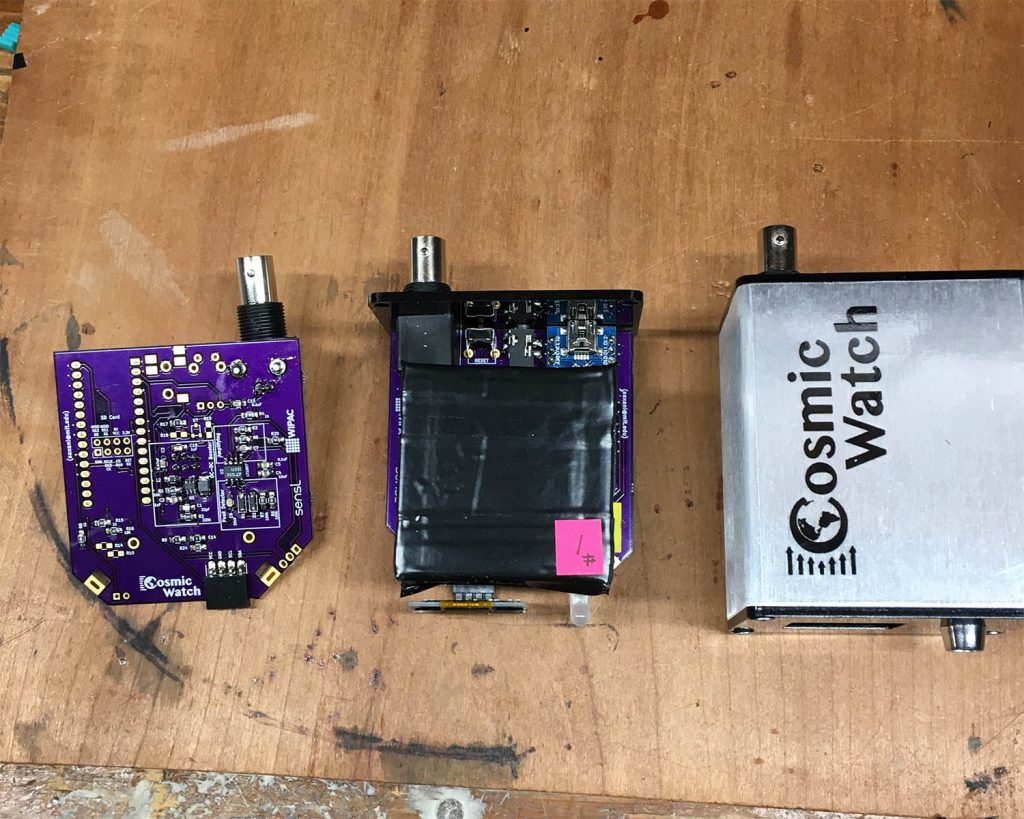
Elliott’s muon telescope detects and records the number of muons coming from different areas (angles) of the sky. The first version of his telescope produced random flashing of 36 LED’s in a 6 X 6 matrix. This provided limited muon detection by observation of 3 or more LED’s flashing simultaneously in a single line. The current version not only detects muons, but shows their relative direction using a strings of 21 LED’s and counts them, too.
Each string or arm of the muon telescope has two Geiger counters with the Geiger tube sensors spaced about 3/4″ apart in the direction of the LED light strings. Each pair of Geiger counters is connected to a NAND gate coincidence detector that register muon particles passing (almost) simultaneously through both Geiger tubes and illuminates a full string of LED’s . The processing is done by an Arduino Nano and recorded on the OLED screen. Here is a video if Elliott’s telescope in-action!
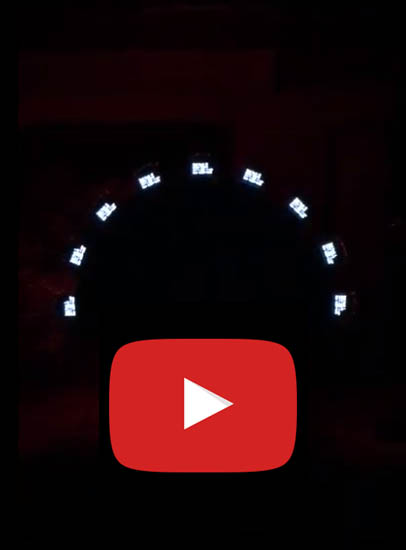
Earlier this year, Jackie and a community member wanted to make commemorative gifts for an award ceremony. Lab staff Nathan was happy to enlist himself to the project! Metal thermos bottles were laser engraved with imagery, producing a shiny silver design against the metallic red paint. Nathan then designed additional graphics with the vinyl cutter, creating a two-tone effect. The result was professional!
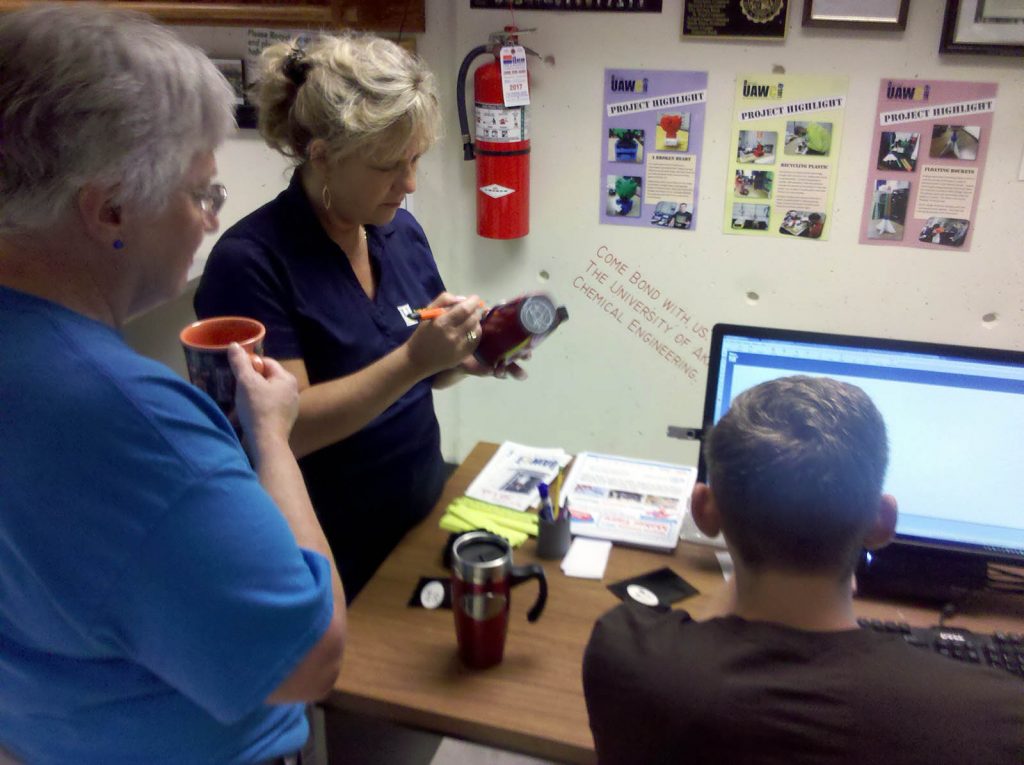

Stay tuned in January as we introduce more interesting folks who participated in last year’s Maker Faire!
Until then,
Tom

Would you eat a 3D printed steak? Coming in 2021!
https://www.engadget.com/3d-printed-plantbased-steaks-193947695.html
This humongous 3D printer produces boats!
https://hackaday.com/2019/12/17/humongous-3d-printer-produces-boat-and-challenges

Have a 3D printer at home? Here are 10 cool 3D printed gift ideas!https://all3dp.com/2/3d-printed-gifts-great-3d-printed-gift-ideas
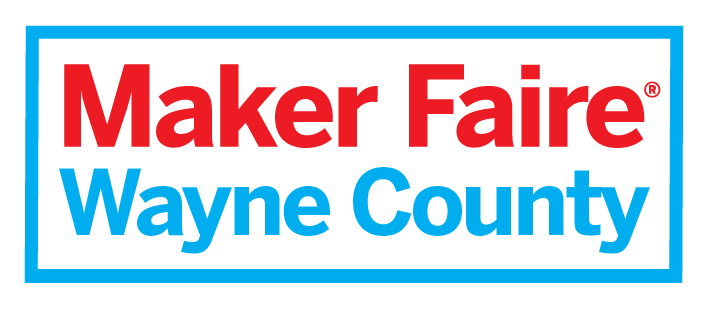
Maker Faire Wayne County 2021 is canceled out of COVID19 precautions.

Maker Monday is postponed out of COVID19 precautions. Please check www.schantzmakerspace.com for future meeting dates, workshops, and activities as some dates have changed.
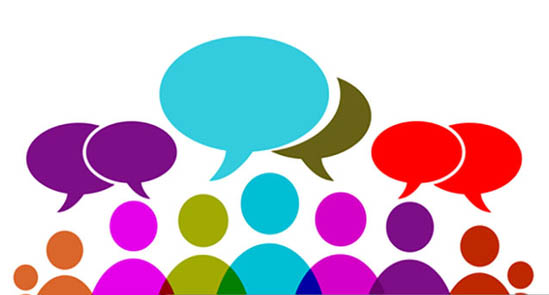
We offer a free “listserv” that allows to you ask questions to members in the makerspace. It’s great for sharing ideas, forming friendships, and helping & advising each other. To join, send an email to listserv@lists.uakron.edu with “SUBSCRIBE MAKERSPACE-GROUP” in the subject line.
